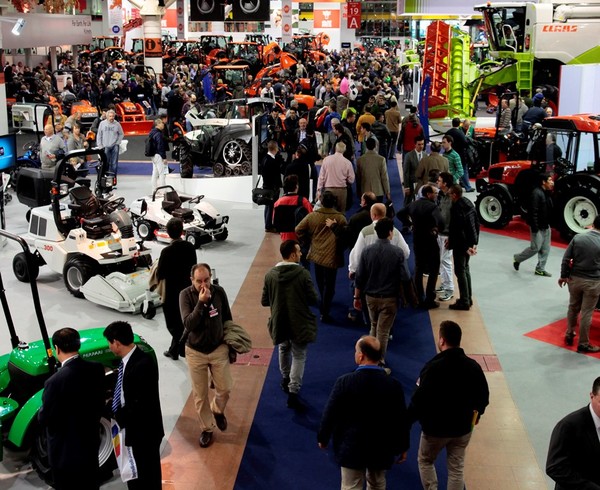
Tractor market: India on top for the numbers, Europe for turnover
Data made public during EIMA International point to a world market in steady growth with variations from country to country and great differences between the continents. India and China are leading the way for units sold but as regards value, Europe and the United States are the richest markets. In this setting, the Italian industry is playing a high profile role with elevated levels of production and standings on markets around the world
There are more than 34 million tractors at work throughout the world with 39% of them concentrated in Asia, 36% in Europe, 22% in the Americas and only a minimum number in Oceania and Africa, the continent showing a great shortfall with only 1.5% of the world’s total. This machinery inventory – based on an estimates of FederUnacoma, the Italian Federation of Agricultural Machinery Manufacturers, on UN Food and Agriculture Organization, FAO, data – is certain to increase substantially in the coming years because the demand for technologies for cultivating the land is in strong growth. In recent years tractor sales have settled at around two million units per year and the medium and long term trend should show further increases leading to a speedy expansion of the overall machinery inventory. According to market data – presented by the world wide association of agricultural machinery manufacturers, Agrievolution, at the EIMA International exposition of agricultural machinery in Bologna – increasingly important roles will be played by the markets in India, expected to confirm tractor sales of 620,000 units throughout national territory at the end of the year, and China, which should close the year in second place with registrations coming close to 500,000 units. Registrations in Western Europe could come to 160,000 units and slightly more than 100,000 in the United States. Also underscored are the emerging markets, such as those in Turkey, with 57,000 units sold in the year and the expectation of 24,500 for the Russian Federation. This great number of sales is an important gauge for locating demand but does not correspond to absolute financial value in that tractors sold in traditional markets are more high powered models and more technologically advanced than those sold in emerging countries and thus weigh in more as regards value. Agricultural machinery moved in Europe carries a value of around €26 billion and about €8 billion for tractors. In the United States, the figures are total value at €21 billion and €7 billion for tractors alone followed by China at overall value of some €14 billion and €9 billion assigned to tractors. The Agrievolution meeting also cast light on the outlook for 2015 with estimates for a number of countries. China should confirm its present market level and Europe is expected to show a 7% decline due mainly to the performances of the leading markets, those in France, Germany and the United Kingdom, in the wake of substantial gains over the past few years. In this connection, the Italian manufacturers are holding down a front rank role in claiming high production levels and significant presences on international markets. Expectations are that this Italian production will hit the value of €7.83 billion by the end of 2014 for a 1% gain. This figure breaks down into nearly €2.26 billion for tractors, €780 million for incomplete tractors and spare parts and €4.79 billion for all other agricultural machinery and equipment to show a climb back to levels close to those of pre-financial and economic crisis times, 8.2%. However an examination of the various types of machinery discloses differentiated production with incomplete tractors and agricultural machinery up by 2.77% and 2.81% respectively and a decline for finished tractors, expected to end the year down by 3.42%. This negative trend in tractor output is associated with a drop in exports. This downturn is due to falling demand on the European market, especially in France which is the leading destination for Italian exports in the sector with a market which was down by 24% in the first nine months of the year. The decline of tractor exports was offset by increases shown for other types of Italian machinery and equipment going especially to the United States market where these exports climbed by 23.3% in the first half of the year. Thus the overall data on exports leads to the outlook of further growth to the end of 2014 of 2% as a continuation of the positive trend over recent years.








